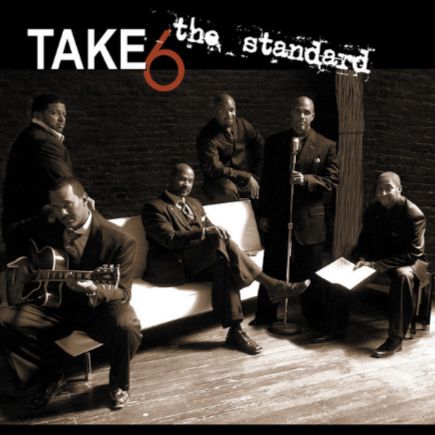Do You Know What It Means to Miss New Orleans?: un hymne à la ville berceau du jazz
Composée par Louis Alter sur un texte d’Eddie DeLange, Do You Know What It Means to Miss New Orleans? est enregistrée par Louis Armstrong en 1946 chez RCA Victor, avant d’être reprise l’année suivante dans la bande sonore du film New Orleans d’Arthur Lubin. Ce mélodrame musical met en scène un couple incarné par Billie Holiday et Louis Armstrong lui-même, également présent à la trompette.
Devenue un standard incontournable, la chanson exprime avec force la nostalgie et l’attachement viscéral à La Nouvelle-Orléans. Sa mélodie poignante, portée par des paroles sensibles, fait revivre l’âme singulière de cette ville mythique, entre beauté mélancolique et chaleur humaine.
Berceau du jazz, La Nouvelle-Orléans a vu naître un langage musical nouveau, nourri d’un foisonnement d’influences: brass bands, blues, ragtime et chants spirituels se sont entremêlés pour forger l’identité sonore d’un genre en pleine éclosion.
Dans ce contexte, Do You Know What It Means to Miss New Orleans? s’est imposée comme une véritable signature émotionnelle de la ville, souvent interprétée lors de festivals, dans les clubs, ou au cours de cérémonies commémoratives.
Une élégante relecture de TAKE 6 et Aaron Neville
Parue en 2008 sur l’album The Standard, l’interprétation de Do You Know What It Means to Miss New Orleans? par TAKE 6, avec la participation d’Aaron Neville, s’impose comme l’une des relectures vocales les plus raffinées de ce standard associé à la mémoire musicale de la Nouvelle-Orléans. Enregistrée trois ans après l’ouragan Katrina, cette interprétation prend une dimension particulière: le sextuor aborde ici la chanson avec une délicatesse qui respecte la tradition, tout en lui apportant une densité polyphonique singulière.
L’arrangement s’appuie sur une architecture harmonique typique de TAKE 6: superpositions d’accords enrichis, phrasés souples et un jeu de nuances qui évoque l’élégance du swing d’après-guerre. Chaque ligne vocale se déploie avec précision, créant une texture presque orchestrale malgré l’absence d’instruments.
La présence d’Aaron Neville, dont le timbre reconnaissable entre tous ajoute une dimension émotionnelle immédiate, inscrit la performance dans une forme de continuité historique. Sa voix, à la fois fragile et intensément expressive, s’intègre avec naturel à la palette sonore du groupe, rappelant l’esprit des grandes ballades créoles.
Do You Know What It Means to Miss New Orleans?: un himno a la ciudad cuna del jazz
Compuesta por Louis Alter con letra de Eddie DeLange, Do You Know What It Means to Miss New Orleans? fue grabada por Louis Armstrong en 1946 para RCA Victor, y retomada al año siguiente en la banda sonora de la película New Orleans, dirigida por Arthur Lubin. Este melodrama musical presenta a una pareja interpretada por Billie Holiday y el propio Armstrong, también presente con su trompeta.
Convertida en un estándar imprescindible, la canción expresa con fuerza la nostalgia y el profundo apego por Nueva Orleans. Su melodía conmovedora y su letra sensible evocan el alma única de esta ciudad mítica, entre melancolía y calidez humana.
Cuna del jazz, Nueva Orleans fue el escenario del nacimiento de un lenguaje musical nuevo, nutrido por un crisol de influencias: brass bands, blues, ragtime y cantos espirituales se entrelazaron para dar forma a la identidad sonora de un género emergente.
En este contexto, Do You Know What It Means to Miss New Orleans? se impuso como una verdadera firma emocional de la ciudad, interpretada con frecuencia en festivales, clubes y actos conmemorativos.
Una elegante reinterpretación de TAKE 6 y Aaron Neville
Publicada en 2008 en el álbum The Standard, la interpretación de Do You Know What It Means to Miss New Orleans? por TAKE 6, con la participación de Aaron Neville, se impone como una de las versiones vocales más refinadas de este estándar asociado a la memoria musical de Nueva Orleans. Grabada tres años después del huracán Katrina, esta lectura adquiere una dimensión particular: el sexteto aborda la canción con una delicadeza que respeta la tradición, aportándole al mismo tiempo una densidad polifónica singular.
El arreglo se apoya en una arquitectura armónica característica de TAKE 6: superposición de acordes enriquecidos, frases flexibles y un juego de matices que evoca la elegancia del swing de posguerra. Cada línea vocal se despliega con precisión, creando una textura casi orquestal a pesar de la ausencia de instrumentos.
La presencia de Aaron Neville, cuyo timbre inconfundible añade una dimensión emocional inmediata, sitúa la interpretación dentro de una continuidad histórica. Su voz, a la vez frágil e intensamente expresiva, se integra con naturalidad en la paleta sonora del grupo, evocando el espíritu de las grandes baladas criollas.
Do You Know What It Means to Miss New Orleans?: un inno alla città culla del jazz
Composta da Louis Alter su testo di Eddie DeLange, Do You Know What It Means to Miss New Orleans? fu registrata da Louis Armstrong nel 1946 per la RCA Victor, e ripresa l’anno seguente nella colonna sonora del film New Orleans di Arthur Lubin. Questo melodramma musicale racconta una storia d’amore interpretata da Billie Holiday e dallo stesso Armstrong, presente anche alla tromba.
Divenuto un classico intramontabile, il brano esprime con intensità la nostalgia e il legame profondo con New Orleans. La melodia struggente e il testo toccante evocano l’anima inconfondibile di questa città leggendaria, sospesa tra bellezza malinconica e calore umano.
New Orleans, culla del jazz, ha visto nascere un linguaggio musicale nuovo, alimentato da un ricco intreccio di influenze: brass band, blues, ragtime e canti spirituali hanno contribuito a definire l’identità sonora di un genere in piena espansione.
In questo contesto, Do You Know What It Means to Miss New Orleans? si è affermata come una vera firma emotiva della città, spesso eseguita nei festival, nei club jazz e durante commemorazioni pubbliche.
Un’elegante rilettura di TAKE 6 e Aaron Neville
Pubblicata nel 2008 nell’album The Standard, l’interpretazione di Do You Know What It Means to Miss New Orleans? da parte di TAKE 6, con la partecipazione di Aaron Neville, si impone come una delle versioni vocali più raffinate di questo standard legato alla memoria musicale di New Orleans. Registrata tre anni dopo l’uragano Katrina, questa lettura assume un significato particolare: il sestetto affronta il brano con una delicatezza che rispetta la tradizione, conferendogli al contempo una densità polifonica unica.
L’arrangiamento si basa su un’architettura armonica tipica dei TAKE 6: sovrapposizioni di accordi arricchiti, frasi flessibili e un gioco di sfumature che richiama l’eleganza dello swing del dopoguerra. Ogni linea vocale si sviluppa con precisione, creando una tessitura quasi orchestrale nonostante l’assenza di strumenti.
La presenza di Aaron Neville, il cui timbro inconfondibile aggiunge una dimensione emotiva immediata, colloca l’esecuzione in una sorta di continuità storica. La sua voce, insieme fragile e intensamente espressiva, si integra con naturalezza nella tavolozza sonora del gruppo, ricordando lo spirito delle grandi ballate creole.
Do You Know What It Means to Miss New Orleans?: an anthem to the birthplace of jazz
Composed by Louis Alter with lyrics by Eddie DeLange, Do You Know What It Means to Miss New Orleans? was recorded by Louis Armstrong in 1946 for RCA Victor and featured the following year in the soundtrack of Arthur Lubin’s film New Orleans. This musical melodrama tells a love story portrayed by Billie Holiday and Louis Armstrong himself, who also plays the trumpet.
Now a timeless standard, the song powerfully conveys the longing and deep emotional bond with New Orleans. Its poignant melody and heartfelt lyrics bring to life the soul of this legendary city—one marked by its melancholic beauty and human warmth.
As the birthplace of jazz, New Orleans gave rise to a new musical language, shaped by a rich fusion of influences: brass bands, blues, ragtime, and spirituals all contributed to the emergence of the jazz sound.
In this context, Do You Know What It Means to Miss New Orleans? has become an emotional signature of the city, frequently performed at festivals, in jazz clubs, and during commemorative events.
An elegant reimagining by TAKE 6 and Aaron Neville
Released in 2008 on the album The Standard, TAKE 6’s interpretation of “Do You Know What It Means to Miss New Orleans?”, featuring Aaron Neville, stands as one of the most refined vocal reworkings of this standard associated with the musical memory of New Orleans. Recorded three years after Hurricane Katrina, the interpretation carries a particular resonance: the sextet approaches the song with a delicacy that honors the tradition while bringing it a distinctive polyphonic richness.
The arrangement is built on a harmonic architecture typical of TAKE 6: layers of enriched chords, supple phrasing, and a nuanced palette that evokes the elegance of postwar swing. Each vocal line unfolds with precision, creating a texture that feels almost orchestral despite the absence of instruments.
The presence of Aaron Neville, whose unmistakable timbre adds an immediate emotional weight, grounds the performance in a sense of historical continuity. His voice—both fragile and intensely expressive—fits naturally within the group’s sonic palette, recalling the spirit of the great Creole ballads.


Do You Know What It Means To Miss New Orleans?–17.10.1946–Louis ARMSTRONG
Do You Know What It Means To Miss New Orleans?–18.04.1947–Billie HOLIDAY
Do You Know What It Means To Miss New Orleans?–01.06.1956–Louis ARMSTRONG
Do You Know What It Means To Miss New Orleans?–13.11.1959–Kid ORY & Red ALLEN
Do You Know What It Means To Miss New Orleans?–xx.07.1981–Stéphane GRAPPELLI
Do You Know What It Means To Miss New Orleans?–19-20.12.1986–Wynton MARSALIS
Do You Know What It Means To Miss New Orleans?–01.11.1988–Harry CONNICK Jr.
Do You Know What It Means To Miss New Orleans?–xx.xx.1991–Pete FOUNTAIN
Do You Know What It Means To Miss New Orleans?–25.08.2005–Stefano BOLLANI
Do You Know What It Means To Miss New Orleans?–20.10-21.10.2008–Jerry GRANELLI
